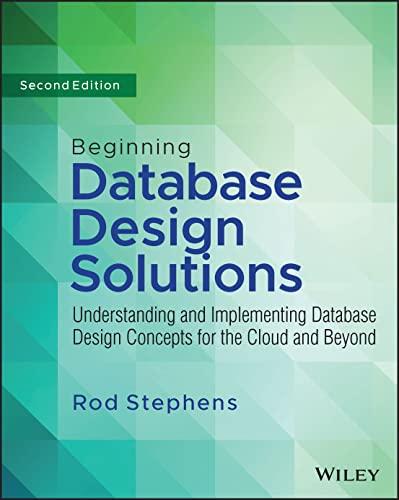PYTHON MULTI CHOICE 1a) Consider the following recursive function:
def myPrint(n): if n < 10: print(n) else: m = n % 10 print(m) myPrint(n // 10)
What does this function do?
| | It prints a positive value forward, digit by digit |
| | It prints a positive value backward, digit by digit |
| | It divides the number by 10 and prints out its last digit |
| | It divides the number by 10 and prints out the result |
1b) Complete the code for the recursive function printSum shown in this code snippet, which is intended to return the sum of digits from 1 to n:
1. def printSum(n): 2. if n == 0: 3. return 0 4. else: 5. ________________________________
| | return n + printSum(n + 1) |
| | return n + printSum(n - 1) |
| | return n - printSum(n - 1) |
1c) This function is supposed to recursively compute x to the power n, where x and n are both non-negative integers:
1. def power(x, n): 2. if n == 0: 3. ________________________________ 4. else: 5. return x * power(x, n - 1)
What code should be placed in the blank to accomplish this goal?
| | return x * power(x, n - 1) |
1d) Consider the following code segment:
def fib(n): # Line 1 if n <= 2: return 1 # Line 2 else: return fib(n - 1) + fib(n - 2) # Line 3 print(fib(6)) # Line 4
Which line is the base case for this recursive function?
1e) The following function is supposed to use recursion to compute the area of a square from the length of its sides. For example, squareArea(3) should return 9.
def squareArea(sideLength) : if sideLength == 1 : return 1 else : ____________________
What line of code should be placed in the blank to achieve this goal?
| | return squareArea(sideLength - 1) |
| | return 2 * squareArea(sideLength - 1) |
| | return 2 * sideLength + squareArea(sideLength -1) |
| | return 2 * sideLength - 1 + squareArea(sideLength -1) |
1f) How many recursive calls to the fib function shown below would be made from an original call to fib(4)? (Do not count the original call)
1. def fib(n): 2. # assumes n >= 0 3. if n <= 1: 4. return n 5. else: 6. return fib(n - 1) + fib(n - 2)
1g) Consider the function powerOfTwo shown below:
1. def powerOfTwo(n) : 2. if n == 1 : 3. return True 4. elif n % 2 == 1 : 5. return False 6. else : 7. return powerOfTwo(n / 2)
What is the best interpretation of lines 2 and 3?
| | One is not a power of two. |
| | Any multiple of one is a power of two. |
| | The integer 1 is an invalid choice for n. |






